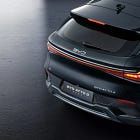Why You Should Consider an EV
New technology initially has too many rough edges: it’s too costly. We don’t know whether it will be reliable, and whether problems can be fixed quickly and economically. We don’t know how long it will last. We don’t know how the economics will work out. We don’t know whether and how much we need to change our life to fit the technology, rather than the other way around. New technology can even be a toy:
For all these reasons, may people don’t buy new technology on day 1, which is the right decision.
For example, Windows 95 was based on old technology that most people used, and Microsoft developed Windows NT (New Technology) in parallel, which required an astronomical 32 MB memory and a Pentium, in days when Windows 95 ran with 8 MB memory without requiring a Pentium. 16 MB was a stretch, and 32 was inconceivable. Windows NT was impractical. Similarly, in initial days, EVs were impractical.
In the early days of any technology, affordable products are bad:
And good products like the BYD Atto 3 are unaffordable at 40 lakh1:
Then, as technology marches forward, flaws are eliminated one by one. With every step, a few more users become a good fit for the technology. But the consensus still says, “Technology X not ready yet”. Despite that, technologists keep diligently hammering away behind the scenes.
Then, one day, it suddenly becomes ready. We have an excellent product. Most flaws have been worked out, and it becomes clear what an advancement the new technology is. What was clear to the builders for years suddenly becomes clear to buyers. Until that point, buyers have seen only bits and pieces, like appreciating EVs for their great acceleration while rejecting them for other reasons. But when it comes together, people can suddenly see that the whole adds up to more than the sum of the parts.
We’ve reached that point today.
Imagine you’ve cooked a wonderful pulao but forgotten to add salt. No matter how good it is otherwise, people won’t be able to appreciate it. Then, when you add salt, people will suddenly say, “Oh, this awesome pulao is what you were cooking all along!”
Salt has finally been added to the pulao.
With all that in mind, let’s see concretely the benefits of EVs:
Fun to drive
EVs are great fun to drive, because of the instant acceleration. They’re very smooth even at high speeds!
When I floored it from a standstill, it didn’t seem exhilarating. But when I asked how many seconds it took to reach 100, it was 9, which I realised was no slower than any petrol car I’ve driven. It had no vibration and less noise, and so didn’t feel fast. The power is delivered smoothly and linearly. This reminds me of when2 I flew in a propeller-driven plane: it was flying at 450 kph, and it was noisy, there were a lot of vibrations, and we were buffeted. Then, I flew in a jet, and it was quiet and stable, with few vibrations. When I looked out the window, I couldn’t even tell if we were moving fast, but we were actually flying at 800+ kph: the jet flies fast, but feels slow. EVs are like the jet. Advanced tech should be fast, not feel fast. I can floor am EV in Sport mode without it being too disturbing3 as it would be if I did it in a gas guzzler. When I floor it, the acceleration comes on smoothly, not abruptly. Compare it with a Seltos where flooring it suddenly pushes you back in your seat. EVs optimise the jerk, the derivative of acceleration. This is the same reason why you could be sitting in a stopped Vande Bharat and when you look up a short while later, you’re traveling at 100 kph, and you never noticed the train start moving. People are sensitive to jerk more than acceleration.
EVs can instantaneously accelerate from 30 to 66 kph. In a road with room for only one lane in each direction, I was cruising at 30, when I spotted a gap ahead. I was able to swing into the oncoming lane, rocket forward at 66 kph, brake quickly to 30, and merge smoothly back into my lane, without forcing anybody to slow down for me, in either lane. All this in a couple of seconds. Petrol cars can’t do this — they have to downshift, and the turbo has to kick in. Even the most responsive transmission, the DCT, is no match for electric. The best transmission is an electric.
I felt very comfortable making fast, precise maneuvers in an EV just after an hour or two. I didn’t reach this level of comfort in any other car despite spending far more time in them.
Another time, I was traveling in the right lane of a two-lane road, and the left lane became empty. Immediately, a Mercedes SUV multiple cars behind me switched into the left lane and started accelerating. Its speed was 20 kph faster than mine. I swung out into the left lane, and eliminated the 20 kph gap instantly. In an EV, 20 kph acceleration doesn’t take a measurable amount of time. It happens instantly. I then accelerated further. The Mercedes didn’t have to brake because I came in his way, because I didn’t. In an EV, nobody can overtake you unless you give them permission4.
EVs are so much fun to drive, more than any other car, because they’re so responsive. They’re machines that can keep up with me. This is exhilarating.
More spacious
EVs don’t have a transmission tunnel and can be more spacious. Some also have a frunk.
Less tiring
At one point in a test drive, when the salesman was driving, he asked me what I thought the speed was. I guessed 70, but he told me it was 115! EVs do such an excellent job insulating you from the chaos outside that you travel encased in your cocoon of joy. There’s no vibration. EVs are effortless to drive. I returned fresh after a 2-hour test drive at high speeds. This never happened to me with a fossil-fuel powered car. Driving a good EV is as much effort as lying in bed. Internal-combustion clunkers have high NVH (noise, vibration and harshness) that tire you out.
Safer at speed
In an EV, you can change lanes quickly at speed, while remaining stable5. This reduces the risk of high-speed driving.
Less likely to get a ticket
Since there’s a speed limit but no acceleration limit, you’re less likely to get a ticket driving an EV with fast acceleration than a petrol car with low acceleration but higher top speed.
Quicker to reach your destination
Say you have a choice between an EV limited to a certain speed E and a petrol car that can reach a higher speed P. Which will get you to your destination faster? The first thing to recognise is that the peak speed matters little. In other words, E is the same as P:
What matters is fast acceleration. Especially in Indian traffic with frequent decelerations:
Running cost
If you drive a lot, the lower per-km cost of EVs will result in a lower Total Cost of Ownership.
Less pollution
Considering how polluted our cities are, every bit helps.
Conclusion
When the tipping point is reached, as it has now, it takes some time before it’s broadly recognised, till the majority of buyers realise that the game has changed. Some of these uninformed buyers6 will buy a fossil fuel-powered car tomorrow. That would be like buying
after
On-road, Bangalore, for the top-end version.
In 2008.
On second thoughts, I’d want Sport mode to accelerate as fast as possible without regard for smoothness. When I want smoothness, I can use Eco or Normal.
Of course, one should be courteous towards other drivers and treat them the one would like to be treated.
This is for two reasons: first, heavier vehicles are more stable, and EVs are heavier. Second, EVs have a low center of gravity.
A fossil-fuel powered car purchased today will have poor resale value in upcoming years since there would be few people who would want an obsolete car (less demand) and many other people like you who would be selling their clunkers (high supply). This demand supply imbalance will cause resale values to fall through the floor.








